ARCHITECTURE. The term Saracenic is usually applied by English writers to Muslim architecture. But though the style may be traced to the Arabians, they cannot themselves be considered the inventors of it. They had, in fact, no distinctive style of their own when they made their rapid conquests, but adapted existing styles of architecture to meet the religious and national feelings of the Muslims.
Muhammad built a mosque at al-Madinah, but it was an exceedingly simple structure, and he left no directions in the Qur’an or in the Traditions on the subject.
The typical varieties of the earlier Muslim architecture are those which appeared in Spain and in Egypt; its later form appeared in Constantinople. The oldest specimen of Saracenic architecture in Spain is the mosque of Cordova, which now serves as the cathedral of the city. It was commenced by the Khalifah ‘Abdu ‘r-Rahman, 786 A.D.
with the avowed intention that it should be the finest mosque in the world, and Byzantine architects are said to have been, specially invited to superintend its construction.
The earliest of the Muslim buildings in Egypt, of which any portions still remain, is the Mosque of ‘Amr at old Cairo, begun about A.D. 642, but greatly altered or rebuilt about sixty years later.
On the capture of Constantinople, St. Sophia was converted by the Muslim conquerors into their chief Mosque, and made their architectural model. The older Saracenic style, as seen at Cordova and old Cairo, continued to be the basis of the new, but it was modified throughout by Byzantine influence. In Persia trace in Muslim buildings the older Persian type, and in India
the Saracenic architects showed the same pliancy in adopting the styles of the various peoples amongst whom they settled. It thus happens (says Fergusson, in his History of Indian Architecture) that we have at least twelve or fifteen different styles of Muslim architecture in Central Asia and in India.
A striking and distinctive feature in early Muslim architecture is the horse-shoe arch, which in time gives way to a cusped or scalloped arch, strictly so termed, the outline being produced by intersecting semi-arches. Another variety of Saracenic arch is the circular-headed and stilted form. The pillars are commonly or exceedingly slender proportions, almost to apparent unsocurity; but owing to the style of the embellishment, this lightness of particular forms tends to heighten the general luxuriance Some have imagined that this element of slenderness in regard to pillars indicates a tent origin of the style. This tent-like character has been further kept up by concave ceilings and cupolas, emblazoned with painting and gilding. Decorations composed of animal and human figures, being interdicted by Muslim law [PICTURES] are not found in Saracenic architecture but their geometrical patterns exhibit singular beauty and complexity, inexhaustible variety of combinations, and a wonderful degree of harmonious intricacy, arising out of very simple elements. Lattice or open trellis work is another fertile source or embellishment, and is similar to the tracery met with in Gothic buildings. Another characteristic of Saracenic style is that of the dome. For part domes occur, in mosques and tombs, and are of Byzantine origin. Minarets are also a special feature in Muslim mosques, and contribute much to the picture of these buildings. They are found in mosques of the later Saracenic style (See Fergusson’s Indian and Eastern Architecture, Mr. Owen Jones’s Alhambra Palace, Hersemer’s Arabische Bauverzierengen)
Muhammad built a mosque at al-Madinah, but it was an exceedingly simple structure, and he left no directions in the Qur’an or in the Traditions on the subject.
The typical varieties of the earlier Muslim architecture are those which appeared in Spain and in Egypt; its later form appeared in Constantinople. The oldest specimen of Saracenic architecture in Spain is the mosque of Cordova, which now serves as the cathedral of the city. It was commenced by the Khalifah ‘Abdu ‘r-Rahman, 786 A.D.
with the avowed intention that it should be the finest mosque in the world, and Byzantine architects are said to have been, specially invited to superintend its construction.
The earliest of the Muslim buildings in Egypt, of which any portions still remain, is the Mosque of ‘Amr at old Cairo, begun about A.D. 642, but greatly altered or rebuilt about sixty years later.
On the capture of Constantinople, St. Sophia was converted by the Muslim conquerors into their chief Mosque, and made their architectural model. The older Saracenic style, as seen at Cordova and old Cairo, continued to be the basis of the new, but it was modified throughout by Byzantine influence. In Persia trace in Muslim buildings the older Persian type, and in India
the Saracenic architects showed the same pliancy in adopting the styles of the various peoples amongst whom they settled. It thus happens (says Fergusson, in his History of Indian Architecture) that we have at least twelve or fifteen different styles of Muslim architecture in Central Asia and in India.
A striking and distinctive feature in early Muslim architecture is the horse-shoe arch, which in time gives way to a cusped or scalloped arch, strictly so termed, the outline being produced by intersecting semi-arches. Another variety of Saracenic arch is the circular-headed and stilted form. The pillars are commonly or exceedingly slender proportions, almost to apparent unsocurity; but owing to the style of the embellishment, this lightness of particular forms tends to heighten the general luxuriance Some have imagined that this element of slenderness in regard to pillars indicates a tent origin of the style. This tent-like character has been further kept up by concave ceilings and cupolas, emblazoned with painting and gilding. Decorations composed of animal and human figures, being interdicted by Muslim law [PICTURES] are not found in Saracenic architecture but their geometrical patterns exhibit singular beauty and complexity, inexhaustible variety of combinations, and a wonderful degree of harmonious intricacy, arising out of very simple elements. Lattice or open trellis work is another fertile source or embellishment, and is similar to the tracery met with in Gothic buildings. Another characteristic of Saracenic style is that of the dome. For part domes occur, in mosques and tombs, and are of Byzantine origin. Minarets are also a special feature in Muslim mosques, and contribute much to the picture of these buildings. They are found in mosques of the later Saracenic style (See Fergusson’s Indian and Eastern Architecture, Mr. Owen Jones’s Alhambra Palace, Hersemer’s Arabische Bauverzierengen)
Based on Hughes, Dictionary of Islam

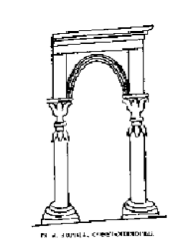
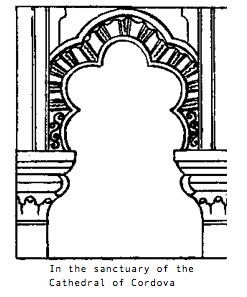
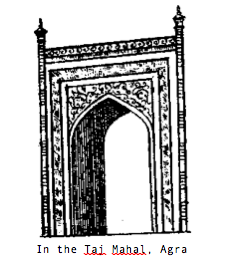
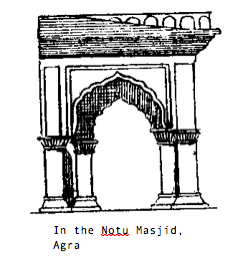
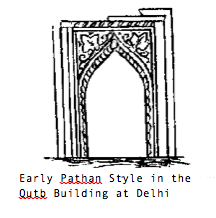
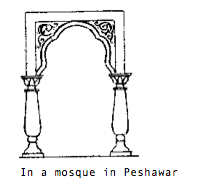
 © 2025 All Rights Reserved
© 2025 All Rights Reserved